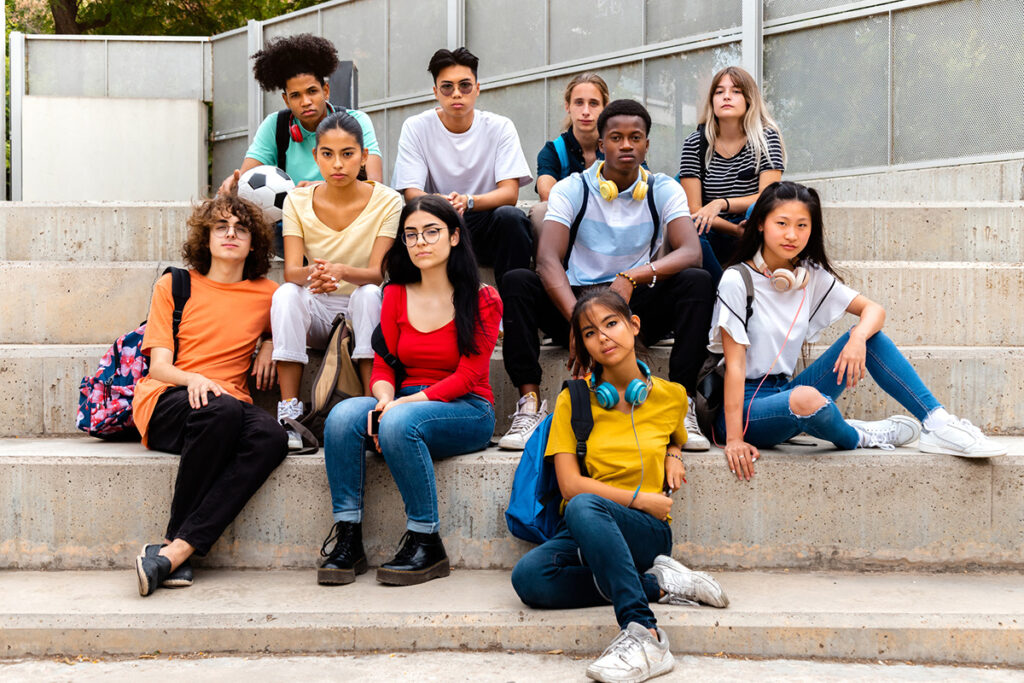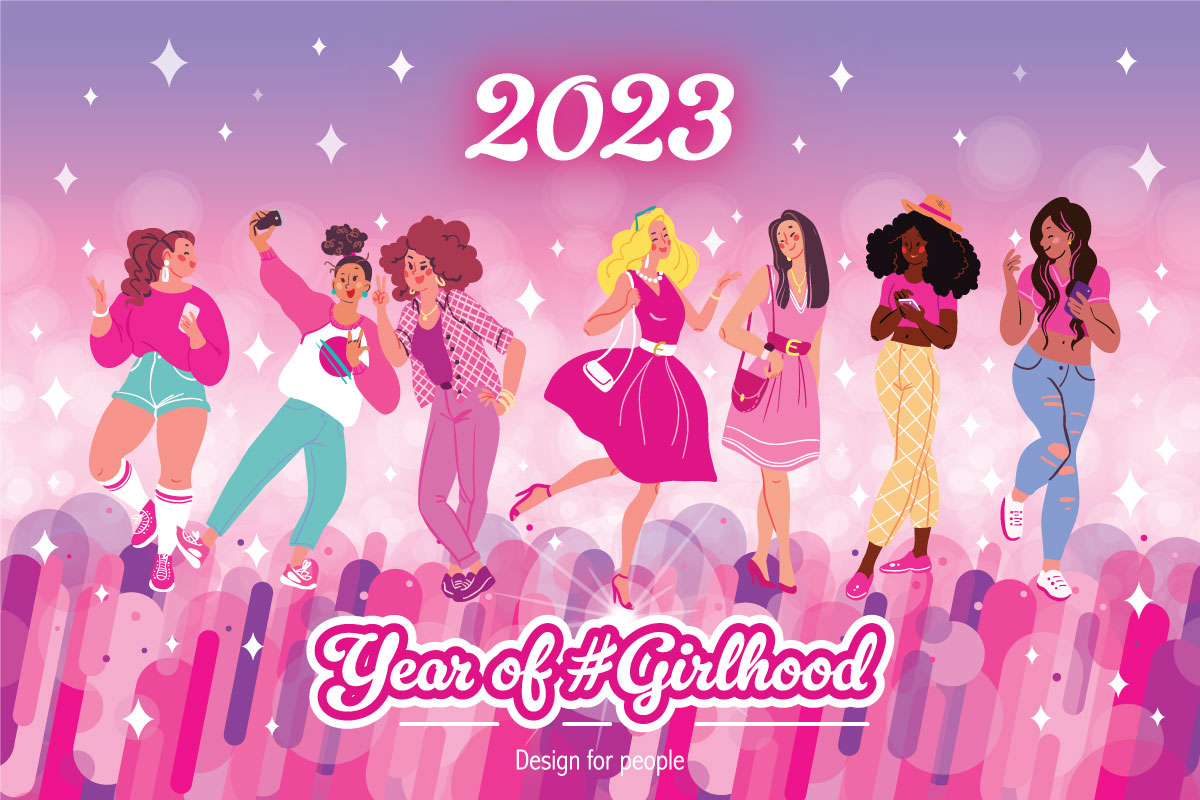Trends for 2022 in Marketing, Design & eLearning
By Katherine Papadopulos and Caroline Hunter
The last two years brought massive change to every aspect of life. Since the start of the Covid pandemic, there has been a major shift in the ways people are going about their daily lives both online and offline. In isolation, people focused their attention more on the importance of their health – both mentally and physically. They started to push for brands to be more socially responsible and began to advocate for those that act both ethically and empathically. Brands took public stances on racial justice, diversity and inclusion, climate change, mental health, voting rights, supporting local businesses, and more. The ways people interact with each other and with brands has shifted. An increase in video content consumption and creation, personalization of social media campaigns, and increased expectations for brands to showcase their empathic values arose.
With the pandemic still in full swing, people are continuing to work from home, scroll through social media, and are focusing more on their personal wellbeing. The Great Resignation and an increased awareness of diversity and inclusion is designating 2022 the year of the Employee. We as marketers, content and online learning creators must be sensitive to the new normal of 2022 using empathy at the forefront.
Moving into 2022, brands will take more social responsibility as they pay more attention to how consumers value the way companies treat their customers and employees. As brands demonstrate their values, the outcome is usually positive – more trust and profit.
As people become more antisocial, social media skyrockets
Social media has become even more critical to marketers these past few years and increasingly so during the pandemic. As people turn to virtual means of communication and consumption, it is crucial that brands utilize these growing platforms – and if done right, they will see great returns on their investments. A notable change for content marketing is that 66% of marketers expect to see their social media budgets rise in 2022 after 43% saw an increase in 2021. With a push for short entertaining content, it is crucial for brands to utilize the increasing importance of social media platforms.
Hootsuite’s list of top trends marketers should look for include brands using social listening through digital communities to build trust with their audience as well as brands being held to a higher standard of social responsibility. This trend is becoming increasingly important as current events, such as the coronavirus pandemic, weave their way into brand voice and identity.
Brands are starting to understand the importance of digital communities as they allow individuals and content creators to connect. Through the connection with niche influencers, brands are able to create trust with their audience and promote social responsibility while acting on feedback from their customers. In turn, this leads to a more accurate measurement of ROI across social media platforms. Consumers are holding brands to a higher standard than ever before when it comes to advertising and content. There is a big push for brands to be socially responsible and understand current events around the world. Social commerce opportunities continue to grow as purchasing directly from social media provides a more seamless buying experience. Businesses should understand the importance of social responsibility because customers expect more from them now. Social media managers are in a unique position to be the hero and create a brand voice and provide customer service that reflects positively on the company.
Social selling is estimated to increase as platforms have implemented ways for buyers to natively buy products – that is, without leaving their site or app. Instagram rolled out shoppable stories where users can click on a sticker to purchase products without leaving their app, TikTok created Spark Ads which allows brands to boost organic content, and Facebook has a marketplace for users to buy and sell products.
With the increase in their budget, marketers should invest in learning new skills to promote different types of content, use empathy when creating it, and focus on the customer experience.

Image courtesy of Hubspot
With a drive for more empathic and personalized content, brands must utilize new marketing strategies. With access to a wider range of people through social media platforms, investing in internet personalities has proven to be the most effective way of reaching the masses with increasing returns.
The Age of the Influencer
Influencer marketing became extremely popular during the pandemic as more people turned to internet personalities to seek out trustworthy brands. Through short-form video content, influencers are able to establish their personal brand, effectively capture users’ attention, and create trust which ultimately leads to an increase in sales. Influencer marketing has become increasingly popular among a newer crowd of micro and nano influencers, expanding the market to even more accessible public figures whose niche followings invest their trust.
According to HubSpot, marketers can expect increased video content, focus on engagement, more dedicated social media personnel, increase in augmented reality use, increase in influencer marketing, more sophisticated social media advertising, and an increase in social selling. They report that 79% of people say UGC (user-generated content) on social media significantly impacts their purchasing decisions. They found that “influencer marketing was the most popular and most effective trend with the biggest ROI.”
Satisfy small appetites with short video “snacks”
With the increase in short-form video content, users’ attention spans have continued to decline; creating the need for short but impactful content. The social media platform TikTok has maintained its status as the number one short-form video platform for content creators while also providing entertainment for everyone stuck at home during the pandemic, proving itself to be an extremely useful resource.
In 2021, the most popular marketing trends included mobile-friendly web design, short-form video, virtual events, and experiential marketing. HubSpot expects these trends to grow even more throughout 2022. Short-form video prioritizes fast-paced content, leading 30% of social media marketers in their plans to invest more in short-form video over any other strategy in 2022.
The top marketing content formats for 2022 include video, and especially short-form videos, through the lead social media platforms; as well as infographics, podcasts, audio content, audio chat rooms, and blogs – which 29% of content marketers are planning to leverage for the first time in 2022. Brands will continue to leverage YouTube for its large audience and growing brand opportunities and likewise, we will see a 62% increase in brand investments towards TikTok in 2022 as it continues to grow in popularity – the most popular of any social platform. With over 3 million global downloads, it was the most downloaded app in 2021. Because of their success, other social media platforms such as Instagram and Facebook (with Reels), Reddit (with ShortClips), and YouTube (with Shorts) have attempted to implement short video content due to its success in leveraging more exposure for branded content.
Overall, it’s clear that consumers prefer short-form video content that amplifies brand voice, entertains them, and allows them to connect with brands. Marketers should focus on creating relatable video content across many platforms, and strive to connect with their consumers to gain feedback and improve customer experience and retention.
In 2022, create visually-engaging, easily digestible content to adapt to the growing demand for short-form video content.
Empathy drives the best content
As consumers demand brand personality and become more conscious about their purchases, 2021 saw an increase in brand-specific video content. With more consumers and influencers staying at home during these recent years, the increasing use of social media and influencer marketing has grown substantially. Having reliable personalities with empathic content can prove to be a valuable asset to the current direction of marketing trends.
Empathy drives the best content. Through more transparent brand personalities, consumers could better connect with brands. Combined with real-time analytics and user-centric trends, video content helped amplify the voice of consumers and helped transform brands from just a name to another key component of a rich, brand experience.
Some trends to watch include:
- Instantaneous Demand. Consumers demand quality, relevance, and trustworthiness.
- Critical Focus on Intent. Understanding consumers’ intent for purchasing or consuming allows creators to publish relevant content and solve consumers’ problems.
- Search and SERPs. Content creators should understand the different ways they can rank in search results, and organize their keywords and content accordingly.
- AR/VR and Video Fusion. When consumers can feel, see, hear, or experience the content they consume, their emotional reaction tends to be stronger.
You can buy anything without leaving the couch
During the pandemic, consumers shifted their purchasing habits to primarily online experiences. Connecting with consumers has proven to successfully increase customer retention and marketers are keen on using their brand voice to create profitable products and services. Aligned with cohesive online experiences, Augmented Reality (AR) is estimated to be consumers’ preferred way to try-out products and interact with brands – such as IKEA’s Place App that lets you see furniture in your home before purchasing. AR is a more personal way for consumers to engage with and test new products, with Snapchat being a lead platform for consumption. HubSpot estimates AR will improve CTR (click-through rates) by 33%.
Along with Apple’s privacy campaign and limiting tracking for most mobile applications including Apple Mail, and Google’s third-party cookie ban, social advertising will become more sophisticated as we head into 2022. Google plans to phase out cookie tracking by 2023, leading many marketers to pivot their existing marketing strategies. Highly effective advertising options that don’t involve cookies include UGC, targeted and personalized ads, email marketing, and search engine retargeting. A data-driven strategic approach will become necessary to understand consumer interests and preferences, and to understand consumers on a more personal level.
Designers are more creative when working from home
Pop-ups and long scrolling websites are a thing of the past – scrollytelling is predicted to be one of 2022’s design trends. Scrollytelling is a form of narrative that allows users to scroll down a webpage as a website “comes to life” by unfolding with moving text, colors, and animations that allow consumers to stay interested in the material.

#IamBinadam borrowed from UX Planet
Data presentation will be simplified and entertaining. Connecting with scrollytelling only makes data more animated, more visually appealing, and more likely to resonate with the audience. Artists should make data easy to read – using charts and graphs to their advantage.
3D art and animation is expected to grow in popularity, inclusivity, and diversity as they are integrated into all facets of website design. When combined with a high-performance application or site that loads quickly, 3D elements tend to be more informative and interactive for the user. Similar to what we see with an increase in video content on social media platforms, designers are having to adjust to consumers’ diminishing attention spans with interactive design elements and animation. Used to tell stories, make loading entertaining, create cursor effects, make logos more interesting, and to create microinteractions, animation is a key tool in capturing users’ attention. Beyond keeping users’ engaged, animations actually help improve SEO as Google gives preference to dynamic content, they look good on mobile devices, and when done right, animations can encompass a brand’s identity and mission in a few seconds!
In 2022, motion design will be an important and well-thought-out part of brand positioning in the market. Think of a new visual identity for a company — the animated identity.
– UX Planet
We can’t put our phones down
It’s estimated that 66% of the world’s population uses a mobile phone – that’s 5.22 billion people. Mobile apps are no longer just for large businesses – they can help streamline business processes, increase productivity of employees, and even increase profits. They’re especially useful if you have a subscription-based product in which consumers can make repeated purchases, get push notifications about sales, and can amplify a brand’s loyalty program. UX Planet also mentions the importance of responsive web design as more users are accessing the internet through their mobile devices.
Along with the increase in mobile phone usage and the Covid pandemic, mobile learning is taking eLearning to the next level. With greater interaction with material and growing accessibility among most of the world, mobile learning provides users with engaging content in real-time so they can learn what is current – “It provides just-in-time learning content, which keeps learners engaged and makes it easy for them to stay current on topics”, as The Learning Lab states. Microlearning such as Duolingo or Quizlet’s gamified flashcards provide users with quick segments of learning on their mobile phone, reducing barriers to education, distractions, and training costs.
Gamification is seen in many empathic applications such as Noom, Calm, and fitness apps. It helps keep users engaged and coming back for more. When learning is paired with points, challenges, or badges, users are more likely to retain bite-sized chunks of information and seek more. Gamified apps are typically personalized to tailor programs for specific needs. Personalization is also common in universities to help cater to the needs and interests of their students.
Scenario-based learning helps bring course material to life through interaction between instructors, students, and the material. In fields such as the medical field where understanding material is life-saving, this approach may help students understand material to a higher level. AR is expected to grow in popularity to enhance eLearning. Similarly, Virtual Reality is used increasingly to fully immerse users in environments. The future of eLearning is personal, immersive, and interactive. We can’t wait to see how these technologies are used to enhance learning experiences this year.
More to come
The past two years have motivated many to reflect on the various ways we choose to interact with the world and with others. We’re prompting to rethink the impact our daily choices make. Going forward, empathy will be the driving force behind meaningful connections with people and brands – especially with the pandemic still at the forefront of our lives in 2022. Empathy is an important factor in all facets of business; diversity and inclusion are two pivotal areas in which empathy thrives. We are excited to embark on this new year together and continue leading with our empathic values in mind and see what is to come.








